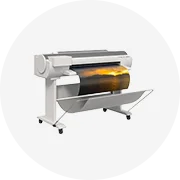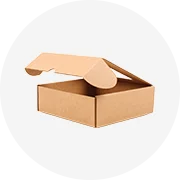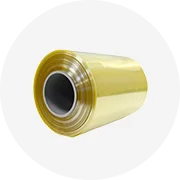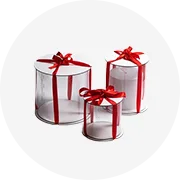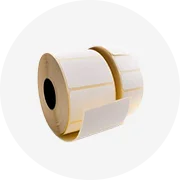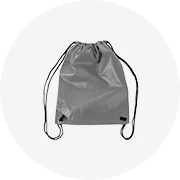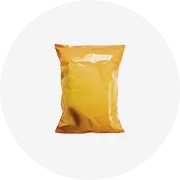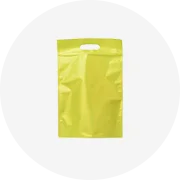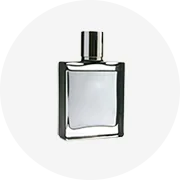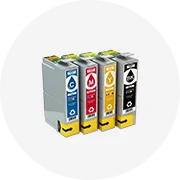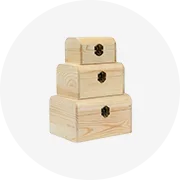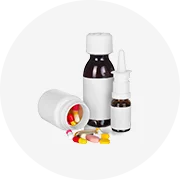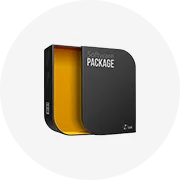Plain toy box
(4306 products available)






Plain Unpainted Gift Box with Hinged Lid for Tool Toy Creative Deco Large Takeaway Wooden Box





Custom Size Dropper Bottle Plain White Cardboard Box Black Red Eye Cream Toy Packaging Boxes for Small Business






Custom Printed Colorful Square Paper Box Plain Solid Color for Cosmetics Toys Packaging





Small Corporate Gifting Rigid Lid and Base Cardboard Box Plain White Paper Craft Sexy Toys Cosmetic Beauty Rigid Box






Custom Logo Cheap Plain Shipping Moving Boxes Children Toys Packaging Box Corrugated Mailing Box for Clothing






Best Price Wholesale Plain Corrug Paper Packaging Doll Toy Gift Boxes With Clear Window






White Plain Shipping Box Tuck Top Box Safe Durable and Perfect for Toy Storage






Small Corporate Gifting Rigid Lid And Base Cardboard Box Plain White Paper Craft Sexy Toys Cosmetic Beauty Rigid Box







Wholesale Custom Folding Delivery Product Paper Printed Plain Toy Packaging Box With PVC Window
 Ready to Ship
Ready to ShipPopular in your industry





Customized Luxury Rigid Pink Toys Plain Hexagon Paper Box with Ribbon Closure






Custom Size Competitive Price Outside Color Printed Inside Plain White Toys Flowers Packaging Shipping Corrugated Mailing Boxes







Plain Kraft Paper Square Clamshell Box Birthday Gift Toy Items Blind Box Surprise Box Gift






Customized Product Small Box , Plain White Cardboard Paper Box for Medicine Supplement Bottle Packaging






Wholesale Plain Square Collapsible White Magnetic Paper Gift Box Shoe Box Magnetic






Biodegradable Surprise Factory Gift Box Money Boxes Mystery Toy Box






High End Plain Gift Toy Box Thick Paperboard Folding Rigid Box Magnetic Closure Packaging for Underwear Clothing Cosmetic






Customized Product Small Box , Plain White Cardboard Paper Box for Medicine Supplement Bottle Packaging






Product Box Custom Small Silver Box Packaging,plain Silver Paper Box,Silver Cardboard Box Plain Silver Box Plain White Box






Plain Suitcase Memory Box Packaging Decorative Toy Suitcase Shaped Cardboard Suitcase with Handle






Cheap Plain Folding Paper Box Drawer Shaped Diy Gift Box Reusable Gift Handmade Food Packaging Boxes




Packaging Paper Cupcake Cup Pop Tiramisu Bulk Wedding Design Disposable Plain Single Cake Box With Window






Factory Marketing Printing Plain Small White Coated Packaging Box Custom Logo Recycled Condom Paper Box With Logo for Packaging






Factory Marketing Printing Plain Small White Coated Packaging Box Custom Logo Recycled Condom Paper Box With Logo for Packaging






Custom logo Cardboard Mailer Shipping Box Plain Corrugated Paper Express Clothing Packaging Box






Custom logo Plain Brown Kraft Girly Monthly Montessori Education Subscription Box Vegan Subscription Box Mailer Box






Paper Boxes Storage Bin Toy Packaging Carton Plain Gift Box Packing Solutions Courier Box Paper Carton Jewelry-Packaging






Plain Suitcase Memory Box Packaging Decorative Toy Suitcase Shaped Cardboard Suitcase with Handle






Delivery Gloves Handcraft Tuck in Design Triangle Top Bottom Leatherette Car Box Plain Paper Boxes






Factory Wholesale Handmade Hinged Lid Large Plain Cardboard Foil Stamped logo Suitcase Shaped Storage Gift Box with Metal Handle






Customized Product Small Box Plain White Cardboard Paper Box for Medicine Supplement Bottle Packaging






12 14 16 18 Inch Pizza Box White Purple Corrugated Boxes with Inserts Cake Mailing Plain Blank White Fancy Corrugated Box






Crown Win Folding Corrugated Shipping Mailing Carton Boxes Plain Black Kraft Mailer for Gift Pack Beauty Makeup Pack Paper Boxes






Factory Custom Printed Plain White Tuck Top Card Paper Package Pills Ointment Syrup Medicine Health Products Packaging Boxes







Customized Brown Kraft Paper Small Gift Box Paper Folding With Company Logo Folding Plain Paper Incense Packaging Box for Jelly






FocusBox Custom Ivory Card Paper clear Display Small Toy Packaging Box with Pvc Window and Hook
Top categories
About plain toy box
Types of plain toy boxes
A plain toy box is a storage system for toys, often designed with a straightforward and minimalist aesthetic. Though the term "plain" may suggest a lack of variety, it still encompasses many designs. These are some popular types on the market:
-
Wooden toy boxes
Known for their durability and timeless beauty, wooden toy boxes can have a classic or contemporary look. They are often painted or left in their natural wood color. Options like pine, oak, or MDF are common. Wooden toy boxes offer a sturdy choice for storing children's belongings.
-
Plastic toy boxes
Lightweight and cost-effective, plastic toy boxes are available in a wide range of vibrant colors. They can be easily cleaned and are often waterproof, making them a practical choice for storing toys both indoors and outdoors. Due to their affordability and durability, plastic options are popular among families with multiple young children.
-
Fabric toy boxes
Fabric toy boxes offer a softer option for toy storage. Typically made from canvas or other types of fabric, they may have collapsible designs for easy storage when not in use. Fabric boxes are often lightweight and available in various colors and patterns, adding a touch of personalization to the nursery or playroom.
-
Metal toy boxes
Metal toy boxes provide a strong and long-lasting storage solution. Often made from stainless steel or aluminum, these boxes can have fun designs with features like handles and wheels for easy movement. Metal toy boxes can be used both indoors and outdoors and are resistant to rust and corrosion.
-
Rattan/Wicker toy boxes
Rattan or wicker toy boxes bring a natural and rustic charm to any space. Handwoven from rattan or synthetic wicker material, they are sturdy and have a breathable design. These boxes often have a vintage or bohemian style and can seamlessly blend with other furniture while adding an aesthetic appeal.
-
Leatherette toy boxes
Leatherette toy boxes are made with a synthetic leather material. They offer a luxurious appearance at a more affordable price. These boxes are often upholstered in a leather-like finish and are easy to clean and maintain. They can add a touch of sophistication to a child's room or play area.
Design of plain toy boxes
A clear understanding of how a toy box operates and its significant components will help parents choose the right box for their children. Generally, toy boxes are containers used for storing toys when they are not in use. They are designed in such a way that they help keep children's spaces tidy and organized, with different toys grouped together. This prevents the over-involvement of parents in cleaning up as they can easily teach children to clean by themselves, using the plain toy boxes to ensure everything is in order. All toy boxes have some common elements and functions, such as:
-
Safety:
Because children are naturally curious, they tend to explore their environments even without supervision. Toy boxes are designed with safety features like rounded edges and soft-close hinges, which protect little fingers from getting trapped between closing lids.
-
Diversity:
There are many types of toy boxes, each serving different needs, such as keeping books tidy or providing extra space to store other items like clothes or shoes. Some boxes have multiple compartments that allow for better organization based on categories; others have an aesthetically pleasing look, adding beauty to the interior design of a child's room while still serving its primary purpose of storage.
-
Durability:
Most toy boxes are made from hard-wearing materials like wood or metal, which can withstand rough handling by young ones without easily getting damaged. Such containers may last for years, maintaining their structural integrity even after being subjected to constant use.
These are some crucial features which make toy boxes safe, useful, and long-lasting. Hence, it is advisable always to go through such elements when choosing a suitable box for storing children's playthings, as they ensure both quality and performance.
Moreover, toy chests are designed with different elements, such as:
-
Material:
Plain wooden toy boxes are made from durable materials, including wood, plastic, and metal, to ensure they serve their purpose for many years while being subjected to rough usage by young ones.
-
Color and finish:
Wooden chests may come in various colors and finishes, including the possibility of adding paint or veneer, which makes them suitable for use in any room within the house, regardless of the existing color scheme. Furthermore, this gives parents an opportunity to have something that can easily blend with their interior decor or stand out as a focal point.
-
Lid:
Most toy boxes come with a hinged lid to open and close easily, allowing children to access their belongings quickly. Some lids are designed to fold inward, thus minimizing the risk of injury if it accidentally falls on someone.
-
Base:
The base of a toy box is another critical component that ensures stability and durability. It is often reinforced with extra support beams or slats, making it less likely to tip over, even when fully loaded with heavy items like stuffed animals or books.
Understanding the design aspects of a plain toy box is crucial for parents and caregivers. This knowledge ensures that the storage solution not only meets the practical needs of keeping children's rooms tidy but also prioritizes safety, durability, and functionality. Whether made of wood, plastic, or metal, the toy boxes are essential for helping maintain order in play areas while providing a secure place where all playthings can be kept away from sight when not in use.
Scenarios of plain toy boxes
A clear understanding of how a product works and the benefits it offers is crucial for business buyers. The scenarios indicate the importance of the plain toy boxes and the benefits they offer. The toy boxes are essential for keeping children's toys organized and safe. In schools, they help maintain order and make learning materials easy to find. Toy chests are crucial in daycare centers, homes, and hospitals during playtime and for storing toys when kids engage in other activities. Libraries use it to arrange books and storytelling materials, while art studios use it to group different art supplies, ensuring kids have what they need for creative work. Plain toy boxes provide a convenient way for caregivers and teachers to manage items, creating a neat atmosphere that promotes concentrated play or study sessions.
Additionally, these scenarios show that the toy boxes are versatile. They can be used at home, in schools, libraries, art studios, and other places where children's stuff needs to be arranged. The toy boxes work as a functional storage solution and an integral part of creating organized environments conducive to learning, playing, and developing.
How to choose a plain toy box
Wholesale buyers of plain toy boxes should consider these factors.
-
Trends in Early Childhood Education
Follow early childhood education trends. Educators and parents want toys that support learning. They also want storage solutions that encourage self-directed play and organization. Look at research studies, parenting blogs, and education journals. They can give insight into what schools and daycares will buy.
-
Sustainability and Eco-Friendly Designs
Sustainability is important to many consumers. Consider plain toy boxes made with recycled materials. Also, look for designs that are modular or upcyclable. These options can have a longer product lifespan and reduce environmental impact.
-
Market Segmentation and Customization
The toy box market has different segments. Some customers want premium, designer storage solutions. Others want budget-friendly options. Think about how to customize plain designs. Adding elements like themed graphics or color-changing finishes can create a unique product. It will meet the needs of different market segments.
-
Partnerships with Toy Brands
Collaborate with established toy brands. Create co-branded storage solutions. These products can integrate popular characters or themes. They will attract consumers who want to buy toys and themed storage in one package.
-
Regulatory Standards and Safety Compliance
Know the safety standards for toy boxes. These standards apply to products in the target market. Comply with rules about hazard warnings and age-appropriateness. Design toy boxes to reduce risks like finger pinching or tipping over. Include labels that reassure parents about safety.
Q&A
Q1: Is a plain toy box safe for children?
A1: Yes, a clear toy box is designed with child safety in mind.
Q2: How can a toy box be personalized?
A2: Toy boxes can be personalized through custom colors, shapes, and names.
Q3: What are the advantages of a clear toy box?
A3: The benefits of a clear toy box include visibility, versatility, and timelessness.
Q4: Can a plain toy box store clothes?
A4: Yes, a clear toy box can also store clothes and other household items.
Q5: Where can one buy a clear toy box?
A5: Clear toy boxes are available from various suppliers and manufacturers on Chovm.com.
Popularity Trends
The web search volume for the keyword "plain toy box" in the packaging and printing category remains consistently low with an average monthly web search volume of 10. Over the last year, the search trend has shown no significant change, maintaining a flat rate with zero percent change observed both in the three-month and one-year analyses. However, a notable spike was observed in August 2024, where web search volume temporarily doubled to 20 before reverting to its usual volume of 10 in the subsequent month.
Analyzing the search pattern, "plain toy box" experiences steady interest with minimal fluctuations throughout the year. The spike in August could potentially indicate a seasonal interest, possibly linked to back-to-school shopping trends or end-of-summer preparations where families might organize or declutter children's rooms. Despite this brief increase, the keyword quickly returned to its baseline web search volume, suggesting that the interest in "plain toy box" remains niche and stable outside of this brief period.
The consistent web search volume and lack of significant growth or decline suggest that the market for "plain toy boxes" is either saturated at a small scale or has niche-specific demands that do not fluctuate greatly with broader market trends. This stability could be attributed to the product's simplicity and its limited appeal to a specific consumer segment, which does not expand or contract dramatically over time.























